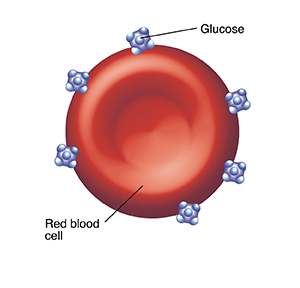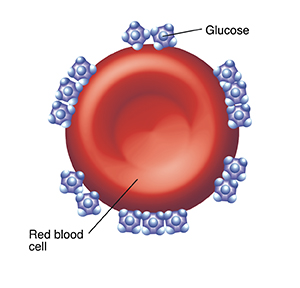Managing Diabetes: The A1C Test
Using your glucose monitor helps you track your blood sugar levels every day. But your glucose monitor shows your blood sugar level only at the time you test it. It's important to know if your overall treatment plan is controlling your blood sugar levels over time. This will help prevent complications and keep you healthy. This type of blood sugar tracking can be done with the A1C blood test.
What is the A1C test?
The hemoglobin A1C blood test can show your blood sugar levels over time. It’s also called the glycated hemoglobin test. This test measures your average blood sugar level over the past 2 to 3 months. A higher A1C result means your blood sugar has been high. This means that you may have a higher risk of complications from diabetes.
The A1C is a blood test done by your healthcare provider. Sometimes the A1C test is used as a screening tool. This means it's used to see if a person has prediabetes or diabetes. More often it is used to see how well you are managing your blood sugar. You will likely have an A1C test every 3 to 6 months.
 |
| Healthy red blood cells have some glucose stuck to them. |
 |
| When you have high blood sugar, much more glucose sticks to the red blood cells. This is what the A1C test measures. |
Your blood glucose goal
Your A1C result may be shown as a percentage. Or it may be a number that is the estimated Average Glucose (eAG). The eAG is a number more like those you see on your daily glucose monitor. Both A1C and eAG measure the amount of glucose on a protein in red blood cells. The protein is called hemoglobin. Your healthcare provider will tell you what your A1C or eAG goal should be. Your goal number will depend on your age, general health, and other factors. If your number is too high, your treatment plan may need to change. You may need different medicines. You may need more changes in your diet or exercise habits.
Example goals
The goal for most adults with diabetes is an A1C lower than 7%. That’s an eAG less than 154 mg/dL. But your personal goal may depend on many things. These include your age and other health conditions. Work with your healthcare provider to set your own personal A1C goal.
Online glucose calculator
You can go to the American Diabetes Association website for a chart that helps convert your A1C percentage into an eAG number. Tell your healthcare provider if the eAG doesn't match the blood sugar numbers from your glucose monitor. There may be a few reasons for this. Your provider will tell you more. For example, you may need to test your sugar at different times of the day.
Online Medical Reviewer:
Michael Dansinger MD
Online Medical Reviewer:
Raymond Kent Turley BSN MSN RN
Online Medical Reviewer:
Rita Sather RN
Date Last Reviewed:
8/1/2023
© 2000-2024 The StayWell Company, LLC. All rights reserved. This information is not intended as a substitute for professional medical care. Always follow your healthcare professional's instructions.